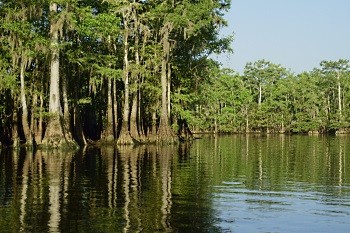The Pee Dee River is large and wild. It runs for 175 miles through South Carolina and offers diverse scenery along a winding course from the Piedmont, through the Sandhills and Coastal Plain, and into the Coastal Zone. The river floodplain and adjacent uplands contain large acreages of wild and undeveloped forestland, wetlands, and open waters that provide excellent habitat for a variety of wildlife species. The free-flowing, unaltered river system in South Carolina is an important habitat for resident and migratory fish species. These natural conditions of the Pee Dee River provide recreational boating and fishing opportunities and many other nature-based recreations that are valued by the public.
While the North Carolina sections of the Pee Dee are dammed, the free-flowing, unaltered river system in South Carolina is an important habitat for resident and migratory fish species. In 2002, the lower 70-mile segment of the Great Pee Dee was designated a State Scenic River. This designation extends from the US Highway 378 Bridge crossing between Florence and Marion Counties to the US Highway 17 Bridge at Winyah Bay in Georgetown County. Recognition has also been given to the historic and recreational values of the Great Pee Dee and Lynches River where a 66-mile section is designated The Revolutionary Rivers National Water Trail of South Carolina.
Adjacent Waterways: on-stream, Lynches River, Little Pee Dee River, Waccamaw River, and Black River; downstream, Winyah Bay (Coastal).
